The subject of this article is different to sculptor Giuseppe Gagini of Palermo, Sicily, who died in 1610


Giuseppe Gaggini (Genoa, April 25, 1791 – May 1, 1867) was an Italian sculptor. [1] [2]
The subject of this article is different to sculptor Giuseppe Gagini of Palermo, Sicily, who died in 1610


Giuseppe Gaggini (Genoa, April 25, 1791 – May 1, 1867) was an Italian sculptor. [1] [2]
He gained a stipend from the Ligurian government to study in Rome. There he was influenced by the Neoclassical sculptors Canova and Thorvaldsen. He returned to Genoa, where he was appointed professor of sculpture at the Academy. Subsequently, Charles Albert of Savoy lured him to Turin with a grant of knighthood and a position as professor of sculpture in the Accademia Albertina.
In Genoa, he completed the statues of Angels in the Duomo; made a nautical statue for public decoration, and the bas-relief for the monument to Christopher Columbus. he also completed the monument to the Balduino family for the Camposanto of Genoa. [3]
In Piedmont, he completed a bas-relief of the Triumph of Paolo Emilio for the Castle of Racconigi; a statue of Vittorio Emanuele I; a monument to Prince Tommaso for the Sindone Chapel; a monument to Marchese Felice di San Tommaso; and a burial monument for the Solei family in the Camposanto of Turin. [4]

Giulio Monteverde was an Italian naturalist sculptor and teacher.

Aristodemo Costoli (1803–1871) was an Italian sculptor who spent his entire career in the city of Florence. He is also known for attempting in 1843 to clean and conserve the famed Renaissance-era sculpture David by Michelangelo; unfortunately his hydrochloric acid cleaning solution removed the stone's waxy protective coating and left the surface pitted and porous. His students included Emilio Zocchi, Girolamo Masini, Augusto Rivalta and his son Leopoldo Costoli.

Ignazio Collino (1724–1793) was an Italian sculptor, active in the late-Baroque period, mainly in the region of the Piedmont.

Vincenzo Vela was a Swiss-Italian sculptor, active mainly in northern Italy.

Leonardo Bistolfi was an Italian sculptor and an important exponent of Italian Symbolism.
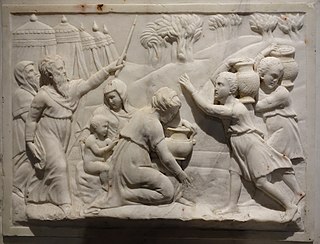
Taddeo Carlone was a Swiss-Italian sculptor and architect.
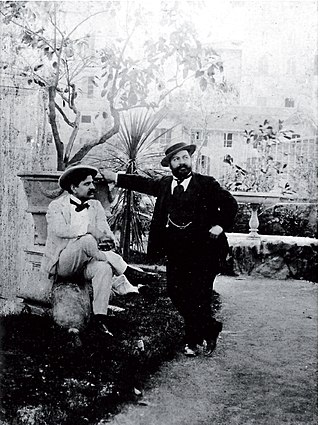
Mario Rutelli was an Italian sculptor.

The Chapel of the Holy Shroud is a Baroque-style Roman Catholic chapel in Turin in northern Italy, constructed to house the Shroud of Turin, a religious relic believed to be the burial shroud of Jesus of Nazareth. It is located adjacent the Turin Cathedral and connected to the Royal Palace of Turin. The chapel was designed by architect-priest and mathematician Guarino Guarini and built at the end of the 17th century (1668–1694), during the reign of Charles Emmanuel II, Duke of Savoy, and is considered one of the masterpieces of Baroque architecture. Heavily damaged in a fire in 1997, it underwent a complex 21 year restoration project, and reopened in 2018. The chapel has an intricate and self-supporting wooden and marble dome.

Augusto Rivalta was an Italian sculptor.

Tito Sarrocchi was an Italian sculptor.

Santo Varni was an Italian sculptor active mainly in Liguria.
Salvino Salvini was an Italian sculptor.
Giovanni Antonio Stuardi was an Italian sculptor.
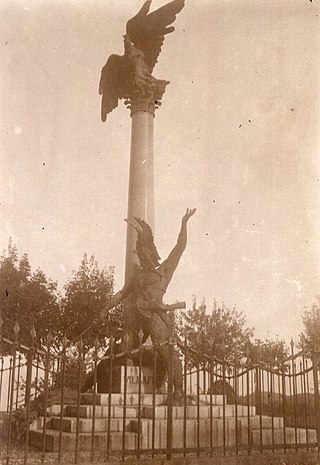
Tancredi Pozzi was an Italian sculptor.
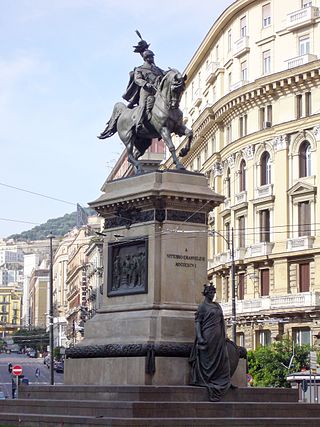
Tommaso Solari was an Italian sculptor active in a Romantic-style.

Giovanni Scarfi was an Italian sculptor.
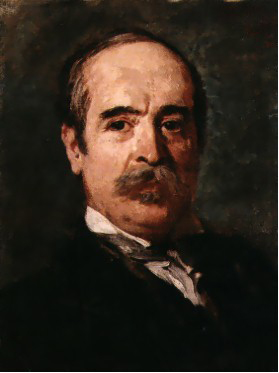
Francesco Jerace was an Italian sculptor.

Giovanni Prini (1877) was an Italian sculptor.

Emilio Santarelli was an Italian sculptor active mainly in Florence.

Giovanni Scanzi was an Italian sculptor. His early apprenticeship led to formal studies in Rome, followed by a career as a prolific artist and teacher. He was particularly active creating monuments for the Monumental Cemetery of Staglieno in Genoa, with many other works located in museums, churches and public venues in Genoa and elsewhere.